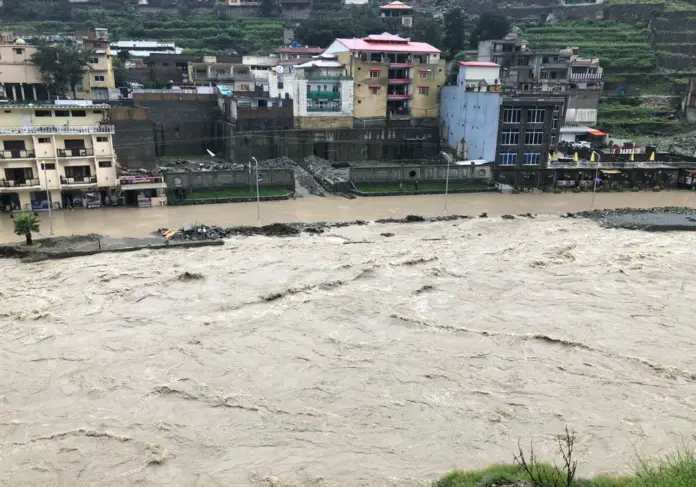By Taimia Sarwar
Since the inception of Pakistan, South Punjab has repeatedly produced politicians of national stature. It has been home to some of the most prominent political leaders, including the Prime Ministers and Presidents of Pakistan. However, the dilapidation of South Punjab highlights that it has not been given back even a tiny share of what it has produced. The population and infrastructure of South Punjab lag behind central Punjab in every possible aspect.
Never has this situation been more glaring than in the wake of current floods. The misery and sense of deprivation of these people have been augmented by the fact that they have been abandoned by their own representatives and their own government. They have been left on their own to deal with the crisis which have caused hundreds of deaths and have rendered thousands homeless. Teams of the National Disaster Management Authority (NDMA) are, even in the areas of their presence, poorly equipped and far less in number to deal with the situation.
Footages on social media show heart-wrenching scenes of whole villages, towns and parts of cities without any sign of life. The catastrophic downpour from the monsoon system has forced analysts to warn of an inevitable humanitarian crisis. Although rains and destruction in the monsoon season have lately become a norm in the underdeveloped areas of Pakistan, rains this year were a great deviation from the norm. The National Disaster Management Authority (NDMA) has highlighted that rains this year broke the 30-year record of average annual rainfall. In some areas, the monsoon this year has resulted in 166% more rainfall as compared to the 30-year average. One can only imagine the havoc wreaked by these rains as even the normal rainfall disturbed the normal lives of thousands of people each year. Some troubles brought by this unusable downpour have been examined below.
The rural population of South Punjab is disproportionately poor and hardly makes both ends meet. Most of the rural population is dependent upon agriculture and livestock farming; both have been grossly affected by the current floods. The late monsoon downpour has resulted in the accumulation of water and thus in the destruction of agricultural crops. The grazing fields of livestock no more offer anything green to cattle. Scary scenes from all over affected areas show cattle being washed away by water currents. One cannot overemphasise the anguish and agony of people who have lost their only sources of livelihood.
The story of the rural population may look most frightening prima facie but the situation of the urban populace is hardly better. Infrastructures and sensitive buildings have been wrecked by water. Water has even gathered in structures which are considered to be the hallmark of urban development in Pakistan e.g. the underpasses of Rahimyar Khan, etc. While the rural population was used to living in fairly disadvantaged situations, the people who had abandoned villages a long time ago yearning for urban life of ease have also been forced to live in conditions that they might have not encountered even in the not-so-promising rural phases of their life.
The tragic tale of those being still able to live in villages or cities are not the complete story. Many people have nowhere to live now. Their residences have been wiped out by these floods and their possessions eliminated. These people are still in a fix about deciding what to do in the overtly miserable life they are left with. These people are now internally displaced people because they have to abandon their hometowns because nothing has survived in those areas. Government and political representatives with their complete negligence and carelessness seem to have made the option to live the life of nomads a Hobson’s choice in the case of these displaced people.
Hundreds have not even left with a life. They have not survived the impending crises for which no emergency arrangements had taken place. In many cases, a large family has lost its sole breadwinner. These families have nothing to eat and except for a kind, intervention may starve to death. The government authorities have failed this test too. Let alone providing hygienic living conditions and food to these starving people, it has not even done anything for the proper identification and burial of those who have been killed in a catastrophe whose effects could have been mitigated by proper planning and intervention from the government. This treatment of people falls well below any reasonable standard of human dignity.
One of the worst affected areas is district Rajanpur. Being located at the periphery of Punjab, it scarcely gets the attention it deserves. 90% of the area of this district has been affected by current rains in one way or the other. It also happens to be the lowest income per capita district in Punjab. This aggravates the helplessness of people as they have no access to even basic commodities of life due to their fragile financial status. No tehsil of the district has been left intact by this catastrophe and people have been forced to move out of their houses. Many people are now jobless, homeless, without food and awaiting a helping hand.
When a population is left on its own the only way it can survive is with its own help. The people of Pakistan must bear in mind that although many of them possess scarce resources as compared to the government officials, they massively outnumber these hibernating government officials in quantity and their will to help their fellow citizens. As the analysis above highlights, the current situation can move any normal human being, it is expected Pakistanis to take charge and do whatever they could to make the miseries of others a little less. The intervention can vary from being logistical to monetary but the underlying resolve is to do at least something.







